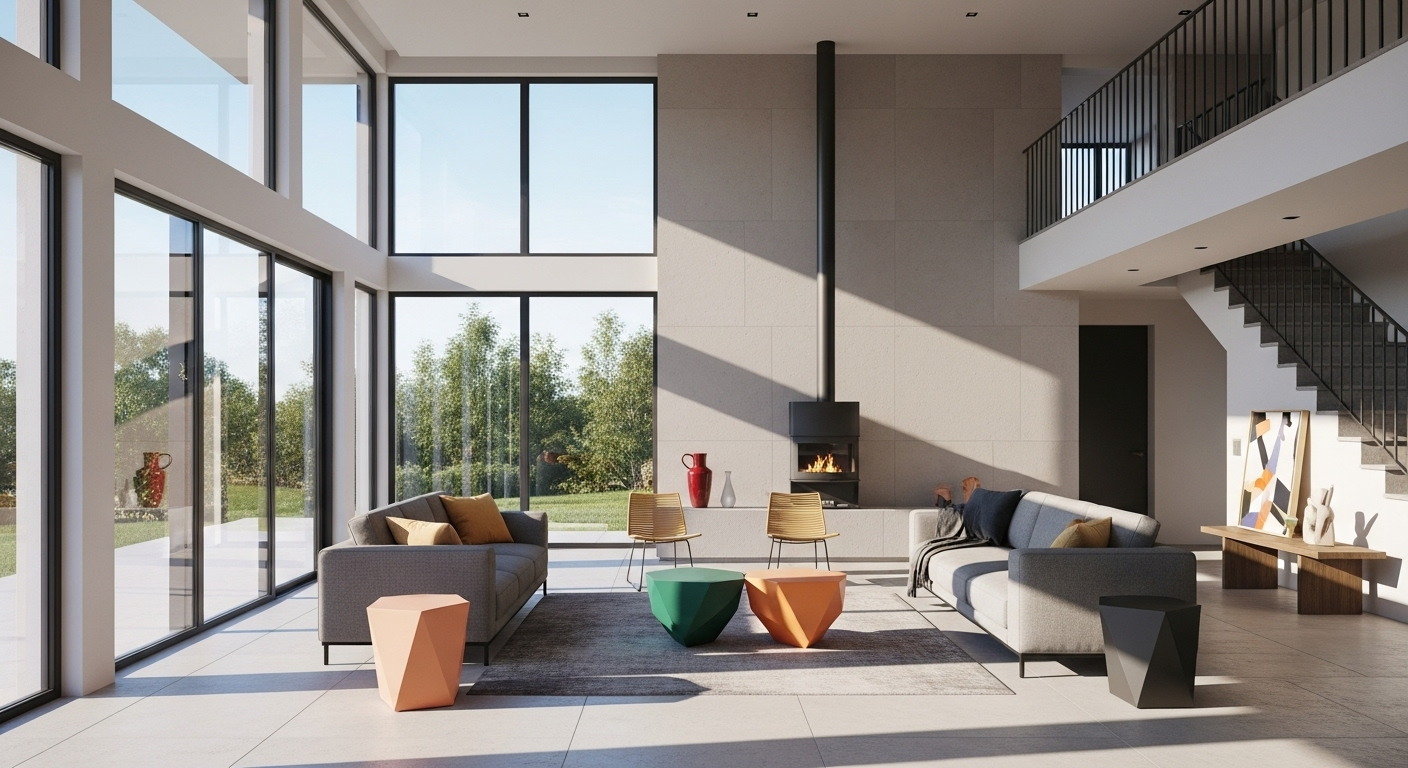Reviving the Charm: Neoclassical Elements in Contemporary Homes
The fusion of timeless elegance with modern sensibilities has given rise to a captivating trend in home design: the resurgence of neoclassical elements in contemporary interiors. This unexpected blend marries the grandeur of ancient Greece and Rome with the sleek lines and minimalist approach of today's aesthetics, creating spaces that are both sophisticated and inviting. As homeowners seek to infuse their living spaces with character and depth, this trend offers a perfect balance of old-world charm and modern functionality.

The Roots of Neoclassicism in Interior Design
Neoclassicism, a movement that swept through Europe in the 18th and 19th centuries, drew inspiration from the art and architecture of ancient Greece and Rome. This style was characterized by symmetry, proportion, and simplicity, often featuring columns, pediments, and ornate moldings. In interior design, neoclassical elements brought a sense of order and refinement to spaces, with an emphasis on light colors, particularly white and pale hues, to create an airy and elegant atmosphere.
The current revival of neoclassical elements in contemporary homes is not about recreating period rooms but rather about incorporating select features that add depth and character to modern interiors. This approach allows homeowners to enjoy the best of both worlds: the timeless beauty of classical design and the comfort and functionality of contemporary living.
Key Neoclassical Elements for Modern Spaces
Incorporating neoclassical elements into a contemporary home doesn’t mean transforming your space into a museum. The key is to select a few standout features that can coexist harmoniously with modern design. Here are some popular neoclassical elements making a comeback:
Plaster Moldings: Delicate ceiling roses, cornices, and wall panels add instant architectural interest to plain rooms. Modern interpretations often feature cleaner lines and simpler patterns than their historical counterparts.
Columns and Pilasters: These vertical elements can frame doorways, define spaces in open-plan layouts, or serve as decorative features. In contemporary settings, they’re often streamlined and may be painted in unexpected colors.
Symmetry: The balanced arrangement of furniture and decor is a hallmark of neoclassical design. In modern interiors, this principle can be applied more loosely, creating focal points and guiding the eye through the space.
Statuary and Busts: Small-scale classical sculptures or busts add a touch of drama and history to bookshelves, mantels, or as standalone pieces in minimalist settings.
Color Palettes: Bridging Classical and Contemporary
The color scheme plays a crucial role in successfully blending neoclassical elements with contemporary design. While traditional neoclassical interiors often featured pale, muted tones, today’s interpretations are more adventurous. Consider these modern twists on classical color palettes:
Monochromatic Schemes: All-white rooms with neoclassical moldings create a serene, gallery-like atmosphere. Alternatively, deep, rich hues like navy or forest green can lend drama to classical architectural details.
Pastel Accents: Soft pink, lavender, or mint green can add a fresh, modern touch to spaces with traditional bones.
Bold Contrasts: Pairing crisp white moldings with dark walls or vibrant wallpaper creates striking visual interest.
Furniture and Accessories: The Art of Mixing
The magic of incorporating neoclassical elements into contemporary homes lies in the artful mixing of styles. This approach creates spaces that feel curated and personal rather than straight out of a showroom. Here are some tips for achieving this balance:
Juxtapose Classical and Modern: Place a sleek, modern sofa beneath a ornate ceiling medallion, or flank a contemporary dining table with neoclassical-inspired chairs.
Update Traditional Pieces: Give classical furniture forms a modern twist with unexpected fabrics or finishes. A Louis XVI chair upholstered in a graphic print or a gilt mirror frame painted in a matte, contemporary color can bridge the gap between old and new.
Curate Accessories: Mix classical busts or urns with abstract art and modern ceramics for an eclectic, collected look.
Neoclassical Inspiration in Unexpected Places
While living rooms and dining areas are natural fits for neoclassical elements, don’t be afraid to incorporate these details in less traditional spaces:
Bathrooms: A freestanding clawfoot tub paired with sleek, modern fixtures creates a luxurious retreat.
Kitchens: Incorporate fluted columns into kitchen islands or add classical moldings to cabinet fronts for a touch of elegance.
Outdoor Spaces: Use urns, statuary, and symmetrical plantings to bring neoclassical charm to gardens and patios.
The revival of neoclassical elements in contemporary homes offers a fresh perspective on interior design, allowing homeowners to create spaces that are both timeless and of-the-moment. By carefully selecting classical features and pairing them with modern furnishings and color schemes, it’s possible to achieve a look that’s sophisticated, personal, and utterly captivating. This trend reminds us that good design is eternal, and that there’s always room for a touch of history in even the most contemporary of spaces.





